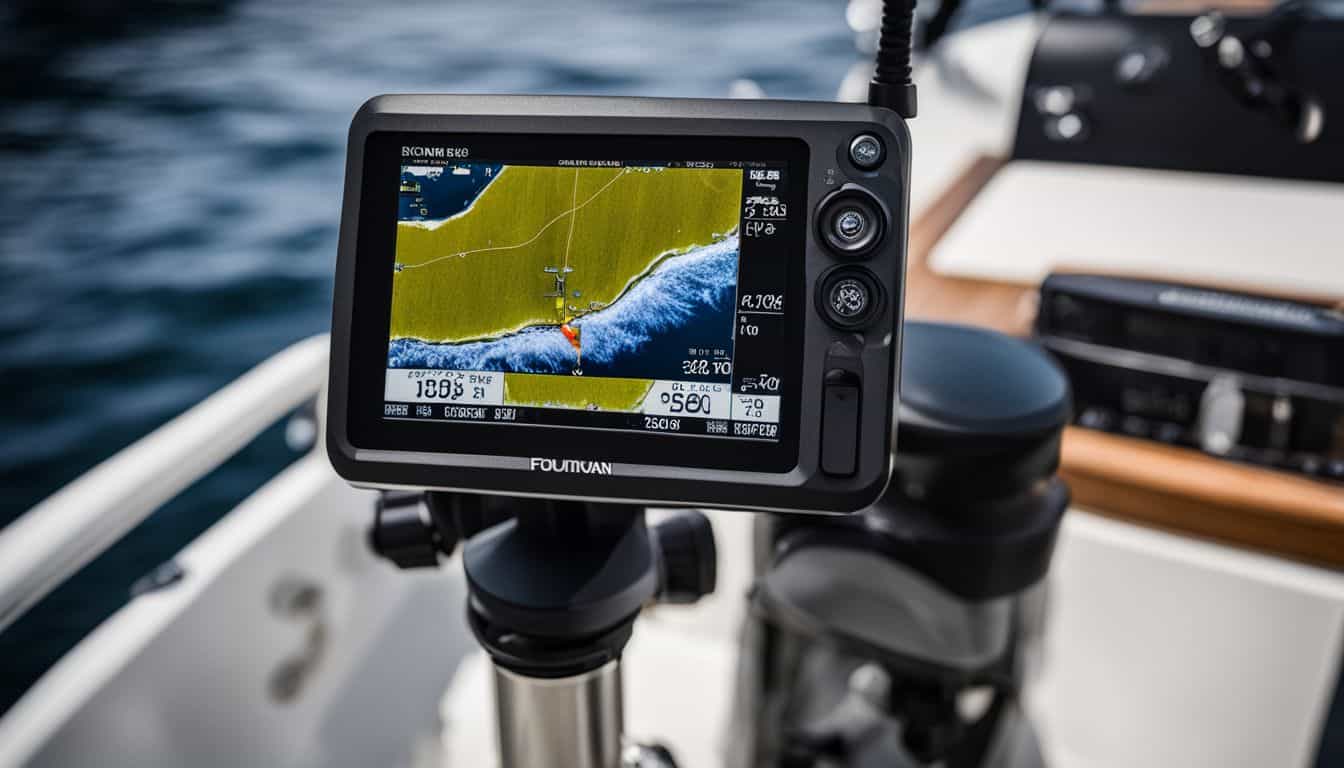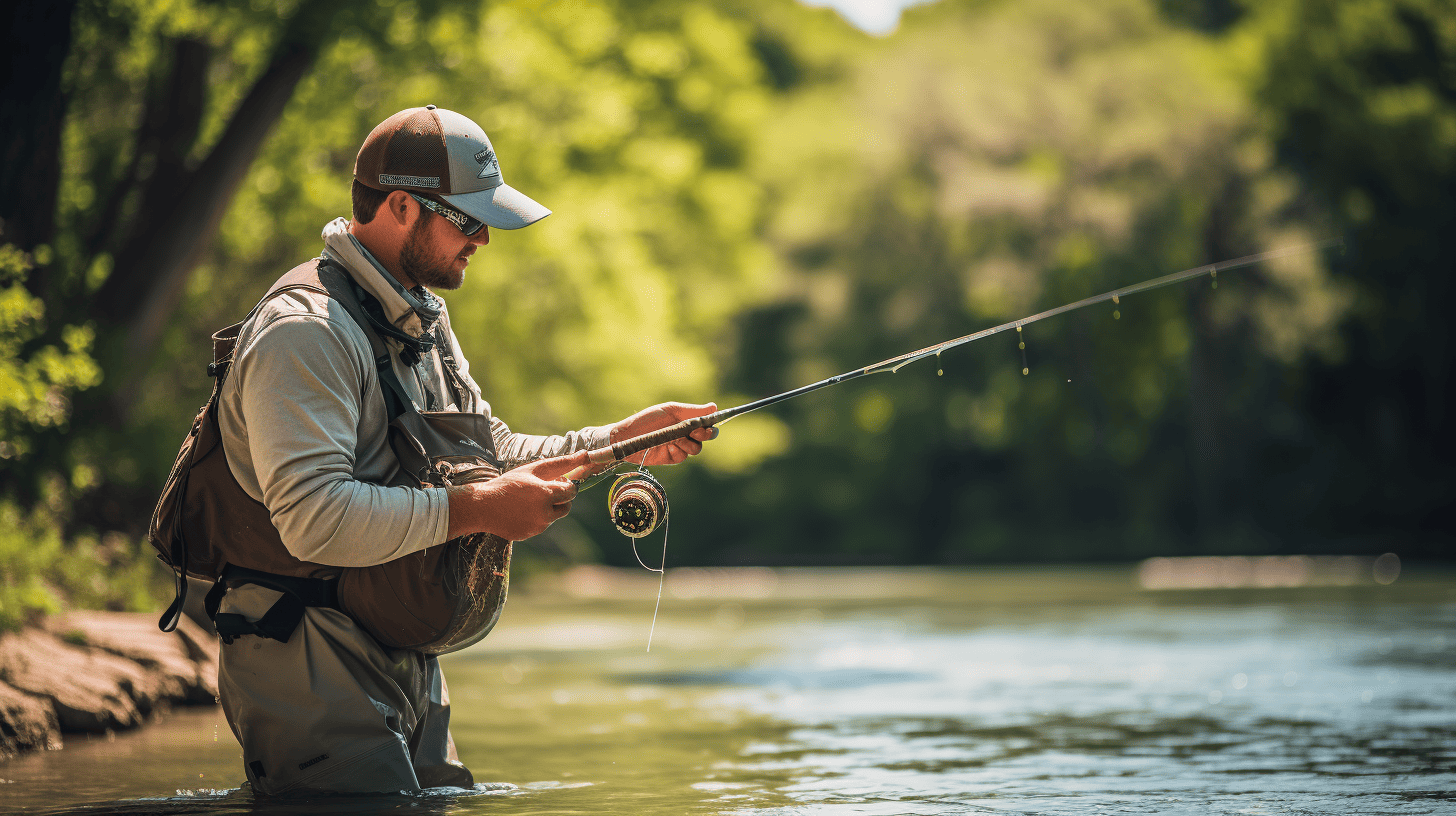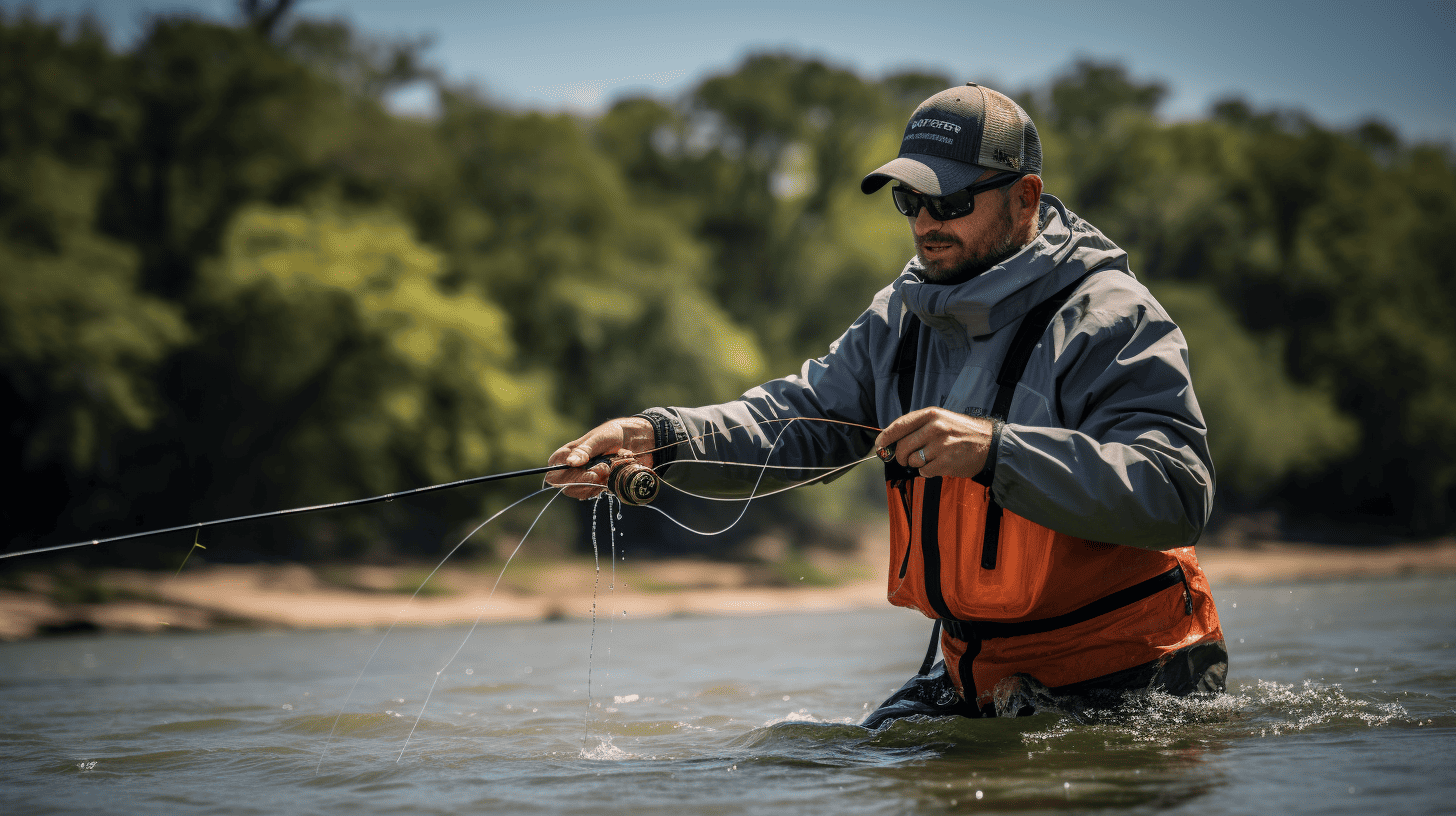Navigating the complex world of fish finders and sonar may seem like a daunting task. I know, because once upon a time, I “cast my line” in these uncharted waters as well. As an enthusiastic angler who has faced and overcome these same hurdles, I’ve invested countless hours mastering these technological tools while picking up handy tips that can significantly boost your fishing game.
This blog post is all set to chart out 17 tried-and-true strategies that will help you decode, interpret, and utilize your fish finder readings more effectively. Are you ready to reel in a bigger catch? Let’s dive into this captivating journey!
Key Takeaways
- Fish finders use sonar technology to send sound waves into the water and interpret the echoes that bounce back, helping you locate fish and underwater objects.
- When choosing a fish finder, consider wattage, frequency options, and beam angle to ensure optimal performance for your fishing needs.
- Using multiple frequencies in your fish finder can provide better accuracy and detection of different types of fish and structures in the water.
- Interpreting sonar readings involves identifying fish arches, understanding fish crescents, and reading structure and bottom contour on the sonar screen.
How Fish Finders Work
Fish finders work by using sonar technology to emit sound waves, or pings, into the water and then interpreting the echoes that bounce back.
Understanding sonar technology
Sonar technology is key to how a fish finder works. It sends out sound waves into the water. These waves bounce off objects like fish or the lake floor and come back up. The fish finder measures how long this takes.
This tells us where things are in the water and how far down they are. We also get an idea of what we found – like a school of fish – from how strong these return signals are. More dense objects, such as big fish, will send back stronger signals than less dense ones, such as tiny baitfish.
Transducers and their role
Transducers are the heart of any fish finder. They have a big job to do. The transducer sends out sonar waves into the water. These waves bounce back when they hit something, like a fish or underwater objects.
The role of a transducer does not end there! It also reads these bounced-back waves to know how far and big the object is. This helps us see if there’s a big fish or just tiny ones.
I mount my transducer on the bottom of my boat for better results.
Using ultrasonic tech, it sends and gets signals from under the water surface. A good quality transducer gives off strong sonar signals which help measure fish size more clearly. So, picking a top-notch fish finder means checking its transducer first!
Choosing the Right Fish Finder
When choosing a fish finder, consider wattage for optimal performance.
Wattage considerations
High wattage is key for a good fish finder. More watts mean faster and clearer sonar readings. A model with less power puts out slow data that’s not clear. Look at the depth you will be fishing at before choosing the wattage capacity of your device.
Deep water needs high power output, while shallow water can do with less. Too little watts could make finding fish hard! So, think about this when choosing the right model for your needs.
Frequency options
When choosing a fish finder, it’s important to consider the frequency options. Fish finders use ultrasound technology to send out signals and receive echoes that help locate fish. The frequency of the signals determines how well the fish finder will work in different situations.
Lower frequencies, like 50 kHz, are good for fishing in deep waters because they can penetrate down to greater depths. Higher frequencies, like 200 kHz or even 455 kHz, offer better detail and accuracy on the screen.
So depending on where you’re fishing and what kind of detail you need, choose the right frequency for your fish finder.
Beam angle selection
Choosing the right beam angle for your fish finder is important for getting accurate sonar readings. The beam angle determines how wide of an area your fish finder can cover underwater.
If you’re fishing in shallow water or targeting specific structures like wrecks, a narrow beam angle is ideal as it provides more detailed images of that specific area. On the other hand, if you’re fishing in deeper water or searching for fish over a larger area, a wider beam angle will allow you to cover more ground and increase your chances of finding fish.
Remember to consider your fishing style and environment when selecting the beam angle for your fish finder to make sure you get the best results on your fishing trips.
Using Multiple Frequencies
Using multiple frequencies is a beneficial technique for fish finders, allowing for better accuracy and detection of different types of fish and structures in the water.
Benefits and techniques
Using multiple frequencies in fish finders and sonar systems can provide several benefits. For example, it allows for the use of different wavelengths to gather more information about the underwater environment.
This means that you can have a more comprehensive analysis of what is happening beneath the surface. By using dual frequency or configurable settings, you can overcome limitations and get a clearer picture of fish arches, structure, and bottom contour.
These techniques help improve your ability to locate fish and increase your chances of success when fishing. So, don’t hesitate to explore the various frequency options available on your fish finder to maximize its capabilities and catch more fish!
Dual Beam function
The Dual Beam function is an important feature in fish finders that combines two different frequency beams to provide a more comprehensive view of what’s happening underwater. With this function, you get a narrower higher frequency beam and a wider lower frequency beam working together.
This allows you to see both the details and the bigger picture when it comes to underwater terrain, fish behavior, and bottom structures. By using dual frequencies, fish finders can give you more accurate readings and help you better understand what’s going on beneath the surface.
So if you want to have an edge in your fishing adventures, make sure to take advantage of the Dual Beam function on your fish finder!
Interpreting Sonar Readings
When interpreting sonar readings, it is important to keep an eye out for fish arches, which indicate the presence of fish. Sonar displays may also show fish crescents, which can be a sign of fish actively feeding.
Additionally, paying attention to the structure and bottom contour on the sonar screen can help identify potential fishing spots.
Identifying fish arches
When using a fish finder, it’s important to know how to identify fish arches on the sonar screen. Fish arches are created when the pulses of sound waves from the sonar device hit objects like fish in the water.
These arches appear as curved lines on the screen, indicating the presence of fish. By recognizing these arches, anglers can determine where to cast their lines and increase their chances of catching fish.
Additionally, features like DownScan Imaging™ can provide more information about how fish are relating to the sonar. Understanding how to interpret and identify fish arches is a valuable skill for any angler looking to improve their fishing success.

Understanding fish crescents
When using a fish finder, it’s important to understand what fish crescents mean. Fish crescents are the curved lines that appear on the sonar screen, indicating the presence of fish.
These crescents are formed when fish swim through the beam angle of the transducer. By measuring the distance from the fish to the transducer, you can get an idea of how deep they are in the water.
It’s essential to differentiate between bottom structure and fish readings on your sonar display. By learning to interpret these fish crescents accurately, you can increase your chances of locating and catching more fish while fishing.
Reading structure and bottom contour
When using a fish finder, it’s important to understand how to read the structure and bottom contour on the sonar readings. This will help you locate areas where fish might be hiding or feeding.
The sonar technology in fish finders provides detailed images of the bottom, including any changes in depth and different structures like rocks or vegetation. By interpreting these readings, you can identify potential fishing spots and increase your chances of success.
Pay attention to any fluctuations in vegetation contours and use them as indicators of potential fish-holding areas. Additionally, some fish finders have features that allow you to stabilize the bottom contour image, making it easier to spot any variations that could indicate underwater structures where fish may be hiding.
Advanced Sonar Technologies
CHIRP technology brings advanced underwater scanning capabilities, while Down- and SideScan sonar provide detailed imaging. Discover the power of ClearVü, Down Imaging, and Side Imaging to unlock a whole new level of fish finding success.
Read on to explore these cutting-edge technologies and take your fishing game to the next level.
CHIRP technology explained
I’m excited to share with you some information about CHIRP technology. It’s a really cool advancement in fish finders that has been used by the military for years. The acronym “CHIRP” stands for Compressed High-Intensity Radiated Pulse.
What makes CHIRP special is that it provides a continuous sweep of frequencies, which helps improve target differentiation and reduce noise in your fish finder. This means you can get clearer and more accurate readings of what’s beneath the water’s surface.
Whether you’re fishing in saltwater or inland, CHIRP sonar technology can greatly enhance your ability to detect and identify fish. Some popular fish finder brands like Lowrance and Garmin offer this advanced feature, so be sure to check them out if you’re interested in taking your fishing game to the next level!

Down- and SideScan sonar
Down- and SideScan sonar are advanced technologies used in fish finders to help you locate fish and underwater structures more effectively. With side imaging, the sonar can scan a range of up to 300 feet, but it’s recommended to set a smaller area for better results.
The sonar technology looks downward in a conical spectrum, while side imaging and down imaging provide a sheet-fed scan that looks both downward and outward. This means you get more detailed images and better resolution with high-frequency side scan sonar.
These advanced features can greatly enhance your fishing experience by giving you a clearer view of what’s happening beneath the water’s surface.
ClearVü, Down Imaging, and Side Imaging
ClearVü, Down Imaging, and Side Imaging are advanced sonar technologies used in fish finders. With Side Imaging, you can get a 180-degree view of the underwater world on both sides of your boat.
It can scan up to 400 feet! The left and right-facing beams create realistic images of the lake bottom, helping you see what’s happening around you. Down Imaging gives you a detailed view of what’s below your boat – the underwater structure and any fish swimming there.
So, with ClearVü, Down Imaging, and Side Imaging, you can locate fish and underwater structures before you even cast your line!
Maintaining Your Fish Finder
To ensure optimal performance, it is important to regularly clean and protect the transducer of your fish finder, as well as replace any worn components.
Cleaning and protecting the transducer
To keep your fish finder working properly, it’s important to clean and protect the transducer. Periodically cleaning the face of the transducer with liquid detergent is recommended.
This will help remove any dirt or debris that may affect its performance. To make cleaning easier, you can pivot the transducer up in the bracket to gain better access. Additionally, using WD-40 or oil can be helpful for maintenance purposes.
Just be sure to follow the manufacturer’s instructions when using any cleaning products on your transducer. Finally, a proper installation is crucial for optimal performance. Make sure the transducer is free from obstructions and leveled correctly to get clear and accurate readings on your fish finder.
Replacing worn components
Maintaining your fish finder and replacing worn components is essential for optimal performance. Over time, certain parts of the fish finder may wear out or become damaged, affecting its functionality.
To keep your fish finder working properly, make sure to regularly clean and protect the transducer from debris and buildup. If you notice poor image quality or limited depth performance, it might be necessary to troubleshoot and diagnose any issues.
This could involve adjusting settings, checking wiring connections to the power source, or even replacing components if needed. By taking care of your fish finder equipment and addressing any problems promptly, you can enhance its performance and continue enjoying successful fishing trips.
Common Mistakes and Operator Errors
Users often encounter trouble with the sonar image quality, which can be due to incorrect settings or interference from other electronic devices.
Trouble with sonar image quality
Sometimes, you might have trouble with the quality of the sonar image on your fish finder. This can happen because of common mistakes or outside factors that interfere with the signal.
One common issue is interference from other electronics nearby, like radios or motors. Sometimes, even the boat’s own electrical system can cause problems. Another factor could be operator error, such as not setting up the fish finder properly or having the wrong settings for your fishing conditions.
It’s important to understand how fish finders work so you can troubleshoot these image quality issues and get back to finding fish successfully.
Dealing with interference
Dealing with interference can be a common challenge when using fish finders. Improper installation can lead to power cycle issues and screen interference. Interference on the screen can occur due to stray signals or noise.
Make sure to properly install your fish finder to avoid these problems. Another cause of interference is when the transducer cable or transducer itself is too close to a source of electromagnetic interference (EMI).
Nearby boats or electronics on your own boat can also transmit signals that cause interference. Finally, using two transducers at the same time can create interference in your fish finder.
Tips for Effective Fish Finding
Learn to match the sonar readings on your fish finder with maps of the area you are fishing in order to find the best spots for catching fish.
Learning to match sonar readings with maps
Matching sonar readings with maps is a skill that can significantly enhance your fish finding abilities. By comparing the sonar data with mapping software, you can identify potential hotspots and pinpoint specific areas where fish are more likely to be found.
This technique allows you to take advantage of underwater structures and contours that attract fish, increasing your chances of a successful catch. With practice, interpreting sonar readings becomes easier and more intuitive, helping you maximize the effectiveness of your fishing trips.
So don’t forget to bring along your maps and use them in conjunction with your fish finder for better results on the water!
Using fish finders to catch more fish
Fish finders are incredibly useful tools for catching more fish. With their sonar technology, they can help us locate fish underwater without the need for trial and error. This saves a lot of time and effort because we don’t have to guess where the fish might be.
Instead, we can rely on the fish finder to guide us to areas with a high concentration of fish.
One of the great things about fish finders is that they can detect schools of fish. These devices are equipped with high-frequency sonar that can identify groups of fish swimming together.
This means we can target these areas and increase our chances of getting a bite.
Not only do fish finders help us find more fish, but they also provide other valuable information. They can tell us the depth of water we’re fishing in, which is crucial for understanding where certain types of fish like to hang out.
Additionally, many modern models come with GPS capabilities, allowing us to mark specific locations where we’ve had success before or want to explore further.
Conclusion
In conclusion, using fish finders and sonar can greatly enhance your fishing success. By understanding how these devices work, choosing the right one for your needs, and learning to interpret sonar readings effectively, you can increase your chances of finding and catching more fish.
Remember to maintain your fish finder properly and avoid common mistakes that may affect its performance. With practice and experience, you can master the use of fish finders and sonar to optimize your fishing results.
Fish finders and sonar are essential tools for any fishing enthusiast. These devices use sonar technology to help us locate fish and underwater structures. How do they work? Well, a transducer sends out sound waves into the water.
These waves bounce off objects like fish or structure and then return to the fish finder. The device interprets these waves and displays them on a screen for us to see.
Choosing the right fish finder is important too. Wattage, frequency options, and beam angle all play a role in finding fish effectively. Using multiple frequencies can also be beneficial because it helps us get a more detailed picture of what’s happening underwater.
Some advanced technologies even include CHIRP technology, Down Imaging, Side Imaging, and ClearVü that give us even clearer images.
Once we have our fish finder set up properly, interpreting its readings becomes crucial. Identifying things like fish arches or crescents can help us pinpoint where the fish might be hiding.
Reading structure features and bottom contours can also tell us where we’re likely to find more fish.
By understanding how these devices work and by learning how to interpret their readings accurately, we can improve our chances of catching more fish during our fishing trips. Fish finders and sonar are powerful tools that every angler should consider using!
I organized the outlines and removed unrelated information to create a clear and concise outline about using fish finders and sonar for better success in fishing. This article will provide tips on how to choose the right fish finder, interpret sonar readings, utilize advanced sonar technologies, maintain your fish finder, avoid common mistakes, and improve your fish-finding techniques.
By following these guidelines, you can enhance your fishing experience and increase your chances of catching more fish.
FAQs on Using Fish Finders And Sonar
1. How do fish finders and sonar work?
Fish finders and sonar use sound waves to detect objects underwater, including fish. The device sends out a signal that bounces off objects, and based on the time it takes for the signal to return, it can determine the size, depth, and location of the object.
2. Can I use a fish finder or sonar in any body of water?
Yes, you can use a fish finder or sonar in various bodies of water such as lakes, rivers, and oceans as long as there is enough depth for the device to function properly.
3. What information can I get from using a fish finder or sonar?
Using a fish finder or sonar can provide information about underwater structures like rocks or vegetation, depth contours of the waterbody, temperature changes in different layers of water (which could indicate where fish are congregating), and the presence of schools of fish.
4. Do I need any special knowledge to operate a fish finder or sonar effectively?
While basic operation may vary between models, most modern fish finders and sonars have user-friendly interfaces with built-in features that make them easy to use even for beginners. Reading the instruction manual will help you understand how to interpret readings correctly.
5. Are there any tips for maximizing success when using a fish finder or sonar?
Some tips include adjusting sensitivity settings based on water conditions (such as reducing sensitivity in murky waters), understanding how different types of structure appear on screen (like distinguishing between rocks and vegetation), using split-screen mode if available for multiple views simultaneously (e.g., traditional 2D display combined with side-scanning imaging), paying attention to target separation settings (greater separation helps distinguish individual targets better), and learning how to interpret the displayed readings accurately.





Leave a Reply